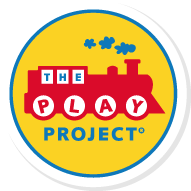Jokes, Imagination, and Autism Intervention
Richard Solomon MD
One of my patients with high functioning autism asked me: “What did the kid say when the Statue of Liberty sneezed?” I shrugged. He joked: “God bless America.”
Jokes are one of the most sophisticated forms of pretend and imagination. Understanding jokes and being able to tell a joke may be one of the best predictors of social success for a child with an autism spectrum disorder. The good news is that, according to brain researchers, play, playfulness and joking are built in to every human brain including the brains of children with autism. The question is: How do I get children with autism to laugh at my jokes?
As young as 12 months and certainly by 18-months children get humor. The humor is simple of course, like “I’m going to get you.” Or “You want it? No you can’t have it.” Or “Don’t wake up daddy! (Which they do; and daddy gets SO mad!) The first is a ‘joke’ about monsters not being that scary; the second about wanting and not getting; and the third about ‘being bad’. These are hilarious to an 18-month old. In typical children, there is a built in (and learned) sense of what is expected. When we play on those expectations, they get it. As much as I would like to, I’m not going to go on and on about the nature of humor or joking in young children. If I have to explain jokes, I mean really, let’s call the whole thing off.
You know why you can’t tell a kleptomaniac a joke? They take things literally.
William Blake (1757-1827), one of the great poets of the romantic era (“The Songs of Innocence and Experience”), knew intuitively what the brain researchers have discovered when he said: “Imagination is the Divine Body in every Man.” He recognized the capacity to imagine as THE unique and vital creative force within every human being. While the traditional behavioral interventions for autism rarely place much emphasis on imaginative play, in The PLAY Project’s autism early intervention program we are serious about play!
Four year olds can imitate the form of a joke—they know you’re supposed to say something silly and then laugh (which is funny to watch)—but it’s not until 6 or 7 that real joke telling starts. “What did painter say to the wall?” One more crack like that and I’ll plaster you!
To become a true joke teller though a child must pass through a series of imagination stages. In our program, we recognize 3 stages of imaginative pretend play. Typical children achieve these stages by age 4 to 5 years of age. For children with ASD these stages are often delayed but they will unfold developmentally as a source of joy and fun when the child with ASD is ready. The 3 stages are: 1.) Imitative Pretend (18 months in typical children), 2.) One-thematic Pretend (2 years in typical children), and 3.) Two-thematic Pretend (3 years in typical children). Imitative Pretend includes putting a bottle to a baby doll’s mouth in imitation of mommy feeding the new baby or putting a phone to an ear in imitation of daddy talking on the phone. One-thematic Pretend includes: feeding a puppet pretend foods; the monster (daddy) who is coming to get you; pushing a dolly in a stroller; or driving little cars around while going ‘zoom, zoom’. Two-thematic pretend has a story: Going to the doctor to get better, having a tea party with a whole group of stuffed animals, or playing good guys and bad guys.
These stages, this Blakean capacity for imagination, leads to the essential social skill—considering someone else’s perspective. We must be able to imagine what others are thinking by ‘reading’ their tone of voice, and interpreting (through an act of imagination) their facial gestures. We understand (by an act of imagination) that others have feelings and a personal history.
By the time a typical child is 5, they can play in a socially sophisticated way with their peers. They greet their peers with a high fives or hugs; they make small talk (“I got new shoes.”), they share personal information (“I got a new baby sister.”). They learn to take turns and share. They find out what is fun and funny to their peers. In short, typical children consider others and take others’ perspectives by using their imaginative capacities which leads to friendship, the ultimate social achievement.
Is this capacity to be social and make friends even imaginable for children with ASD?
It is! Many children with autism have the potential within their brains to be creative, self-aware, empathic, and highly social including the potential to make friends. I have seen it many times. The way to empathy is through imagination and play. . .and jokes! Sad to say, I have also seen too many children with ASD who were never even given the chance to become imaginative because it wasn’t emphasized in their therapeutic program.
I’ll end with a recent email sent to me by a parent whose son was in The PLAY Project Autism Intervention Program: “You probably remember that we did PLAY with Joey (not his real name) starting around the age of three, and we still engage him all the time using PLAY techniques. He will be six in February, and he is doing well in kindergarten. . . But even more wonderful for me is what he said yesterday. At breakfast, we were talking about what we were thankful for. His first response was “Playing video games with Daddy,” which isn’t too surprising – Minecraft, Portal, etc. are great bonding for them. But a minute later he says, “And guess what Mommy?” I looked up from my breakfast, and he looked right at me, pointed, and he said, “I’m grateful for you.” I actually got tears in my eyes. I am sure you know, from working with families, how much things like that mean. I feel like he has done so amazing, and I really credit PLAY Project. I just wanted to say thank you.”
Now there is a boy who has a wonderful capacity for empathy the highest form of imagination. And that’s no joke.

